Providing Best Services in Huntsville, AL
Providing Best Landscaping Services in Huntsville, AL

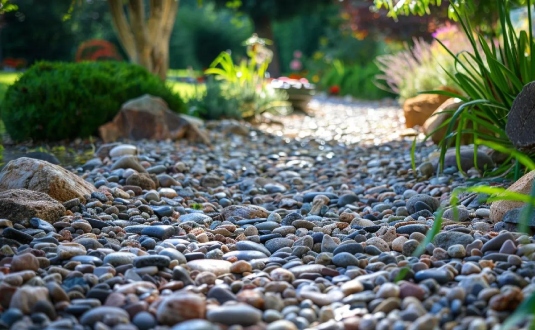

.webp)
What Is The Best Kind Of Gravel For Drainage?
#57 crushed stone is the best gravel for most drainage projects. This gravel measures ½ inch to 1 inch and provides excellent water flow with good stability. Pea gravel works well for lighter drainage needs around homes.
Proper drainage gravel prevents water damage and creates healthier outdoor environments. Poor drainage causes foundation problems, creates muddy areas, and kills plants through waterlogged soil. This guide covers gravel types, sizes, installation methods, and maintenance requirements for effective drainage systems.
What Makes Gravel Effective For Drainage?
Gravel creates spaces between rocks where water flows freely. The size, shape, and type of gravel determines how quickly water moves through the system. Angular pieces lock together while maintaining water pathways. Round pieces resist compaction but may shift during heavy rainfall.
How Gravel Creates Drainage Spaces
Gravel works by creating void spaces that allow water infiltration. According to Pennsylvania State University engineering research, proper drainage gravel should have void ratios between 0.4 and 0.7 for optimal water flow. These spaces prevent water from pooling on surfaces and redirect flow to designated outlets.
The particle shape affects drainage performance significantly. Crushed angular gravel creates more stable foundations but still allows water movement. Rounded gravel from rivers and streams provides less structural support but offers superior drainage capacity.
Size Impact On Water Flow Speed
Gravel size directly impacts drainage speed. Small gravel under ½ inch drains slowly and packs tightly under pressure. Large gravel over 2 inches creates unstable gaps that allow soil infiltration. Medium gravel between ½ and 1 inch balances flow speed with structural stability for most applications.
Clean, washed gravel drains faster than gravel mixed with dust and small particles. Dirty gravel contains fines that fill void spaces and reduce permeability. These fine materials can migrate and clog drainage systems over time.
Which Gravel Types Work Best For Drainage?
#57 crushed stone performs best for most drainage applications. This angular limestone or granite gravel measures ½ inch to 1 inch according to AASHTO M43 specifications. The irregular shapes interlock for stability while maintaining drainage spaces.
#57 Crushed Stone Specifications
#57 stone passes through a 1-inch screen but gets retained on a ½-inch screen. This size gradation creates optimal void space for water flow while preventing excessive settling. The angular particles resist displacement during high-flow events and provide long-term stability.
Professional contractors prefer #57 crushed stone for French drains because it handles both structural and drainage requirements. The material costs $25-$35 per cubic yard and readily available from most aggregate suppliers.
Pea Gravel For Residential Applications
Pea gravel ranks second for residential drainage needs. These smooth, rounded stones measure 3/8 to 3/4 inch and resist compaction due to their spherical shape. Pea gravel provides moderate drainage capacity with attractive appearance for visible applications.
The rounded shape of pea gravel prevents tight interlocking, which maintains porosity but reduces structural stability. The material costs $30-$40 per cubic yard depending on color and source location. Homeowners dealing with muddy yard problems often find pea gravel provides adequate drainage while maintaining attractive landscaping appearance.
River Rock For High Volume Water
River rock handles high-volume water flow effectively. These naturally rounded stones range from 1 to 3 inches and create large drainage gaps between particles. River rock excels in applications requiring rapid water movement such as dry creek beds and storm water management systems.
The larger size of river rock creates void ratios approaching 0.8, allowing extremely fast drainage but requiring careful installation to prevent soil migration. Material costs range from $35-$75 per cubic yard depending on stone size and regional availability.
How Do You Choose The Right Gravel Size?
Most residential drainage projects need ½ to 1-inch gravel for optimal performance. This size range balances water flow speed with system stability according to engineering specifications. Pennsylvania State University research indicates gravel between 2mm to 9.5mm provides optimal drainage for typical soil conditions.
Medium Gravel Benefits
Medium gravel between ½ and 1 inch provides the best balance for most homeowner projects. This size range offers reliable drainage performance while maintaining reasonable installation costs and material availability. Medium gravel works effectively for French drains, foundation drainage, and general landscaping applications.
Engineering studies show medium gravel achieves optimal performance in systems with perforated drainage pipes. The size allows adequate water flow around pipe perforations while preventing pipe clogging from soil infiltration.
Large Gravel Considerations
Large gravel between 1 and 2+ inches creates maximum water flow capacity for heavy rainfall areas. This size range handles storm water management and high-volume applications but requires specialized installation techniques. Areas without drainage pipes often require large gravel to compensate for lack of mechanical water collection.
What Are The Best Gravel Applications?
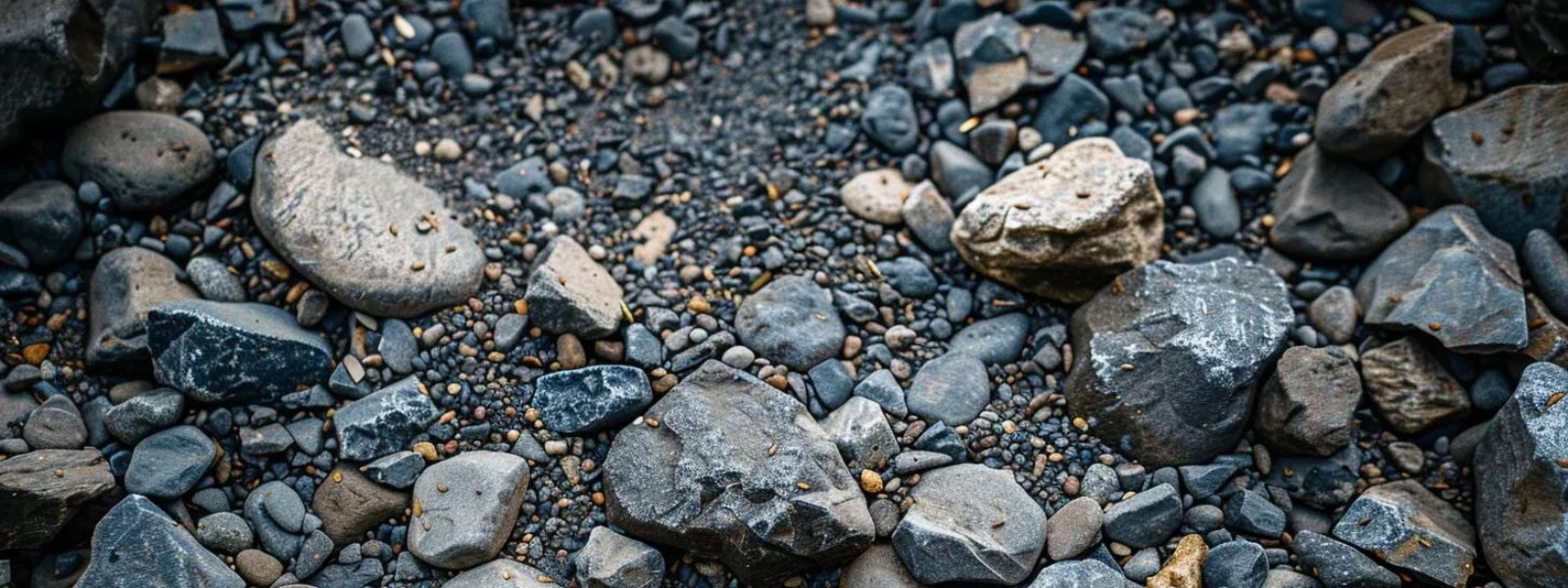
French drains perform best with #57 crushed stone due to its optimal balance of drainage and stability. These subsurface drainage systems redirect water away from problem areas using perforated pipes surrounded by gravel.
French Drain Installation Requirements
Installation of French drain systems requires precise grading to achieve minimum ¼ inch per foot slope. The trench width should extend at least 6 inches beyond the pipe on each side to accommodate gravel placement. Proper installation includes 2-3 inches of gravel below the pipe and 6 inches of coverage above.
French drains solve multiple drainage problems including foundation water intrusion, yard flooding, and landscape erosion. The systems work continuously without power requirements and can last decades with proper installation and maintenance.
Foundation Drainage Systems
Foundation drainage protects buildings from water damage and requires careful gravel selection. Pea gravel or #57 crushed stone work best for foundation applications, providing adequate drainage without creating excessive pressure against foundation walls.
Professional drainage solutions often include waterproof membranes and drain tile systems for maximum protection. Areas with heavy clay soil benefit from professional drainage solutions that address soil permeability issues along with gravel installation.
Garden And Plant Bed Drainage
Garden drainage requires gentle water management that protects plant roots while preventing waterlogged conditions. Pea gravel works best around plants due to its smooth surface that won't damage delicate root systems.
Raised bed construction often incorporates gravel layers for improved drainage and root zone aeration. The gravel layer should be 2-4 inches thick and separated from growing medium with landscape fabric.
How Much Gravel Do Drainage Projects Need?
Calculate gravel requirements using area and depth measurements for accurate material ordering. Multiply length times width to determine square footage of the drainage area. Multiply square footage by desired depth in feet to calculate cubic footage. Divide cubic feet by 27 to convert to cubic yards for purchasing.
Coverage Calculations
Most drainage systems require 4-6 inches of gravel depth for proper function. One cubic yard of gravel covers 162 square feet at 2 inches deep, 81 square feet at 4 inches deep, or 54 square feet at 6 inches deep.
Order 10-15% extra gravel to account for compaction, settling, and installation variations. #57 crushed stone weighs approximately 2,500 pounds per cubic yard. Pea gravel weighs about 2,800 pounds per cubic yard.
What Installation Steps Create Effective Drainage?
Proper installation begins with comprehensive site preparation before any gravel placement. Contact utility location services at least 72 hours before excavation to mark underground utilities including gas, electric, water, and telecommunication lines.
Site Preparation Requirements
Site layout involves marking drainage areas with spray paint and establishing proper grades for water flow. Use a transit or laser level to verify slopes meet minimum requirements of ¼ inch drop per foot. Excavation removes existing soil to design depths while maintaining proper slopes and dimensions.
Gravel Placement And Compaction
Gravel placement requires systematic installation to achieve proper compaction and grades. Place gravel in lifts no more than 6 inches thick to allow adequate compaction. Use mechanical compactors on each lift to achieve specified density requirements.
Geotextile fabric installation prevents soil migration into gravel systems while maintaining water flow. Lay fabric in trenches with 6-inch extensions up each side wall. Never place fabric over drainage pipes as this restricts water entry.
How Do You Maintain Drainage Gravel Systems?
Regular maintenance preserves drainage system effectiveness and extends service life significantly. Inspect systems monthly during wet seasons to identify performance problems early. Look for standing water, gravel displacement, and vegetation growth.
Cleaning And Debris Removal
Surface cleaning removes debris that can clog drainage systems and reduce effectiveness. Clear leaves, twigs, and organic matter from surface drains and gravel areas. Use leaf blowers or rakes to remove accumulations without disturbing gravel placement.
Organic matter decomposition creates fine materials that can clog gravel systems over time. Remove accumulations before decomposition occurs to prevent system contamination.
System Upgrades And Modifications
Gravel replacement becomes necessary when systems become severely clogged or contaminated. Remove affected gravel and dispose according to local regulations. Clean geotextile fabrics or replace if damaged.
System modifications may be needed to address changing site conditions or increased drainage demands. Additional drain lines can be connected to existing systems if capacity allows.
What Do Drainage Projects Cost?
Material costs vary significantly based on gravel type, quantity, and regional availability. #57 crushed stone typically costs $25-$35 per cubic yard for standard limestone or granite varieties. Pea gravel costs $30-$40 per cubic yard for natural colors. River rock ranges from $35-$75 per cubic yard depending on size and quality specifications.
Installation And Labor Costs
Labor costs for professional installation range from $5-$15 per square foot depending on project complexity and regional wage rates. Simple surface drainage costs less than complex French drain systems with multiple connections.
Total project costs depend on size, complexity, and installation method chosen. Simple residential drainage projects may cost $500-$2,000 for materials and DIY installation. Complex commercial drainage systems can exceed $10,000 including professional design and installation.
When Should You Hire Drainage Professionals?
Complex drainage projects require professional expertise to achieve reliable results and prevent costly failures. Foundation drainage, large French drain systems, and projects near utilities need professional assessment and design.
Professional Services Benefits
Professional hardscaping services optimize drainage system performance while minimizing costs and maintenance requirements. Engineers consider multiple factors including rainfall patterns, soil conditions, and long-term site development plans.
Installation warranties provide protection against defective workmanship and material failures. Professional contractors typically offer 1-3 year warranties on installation quality.
DIY Vs Professional Installation
DIY installation works well for small drainage areas under 100 square feet with straightforward access and soil conditions. Simple surface drainage and garden bed applications suit homeowner installation capabilities.
Safety considerations favor professional installation for deep excavations, heavy equipment operation, and work near utilities. Professional contractors have safety training and insurance coverage for these risks.
What Common Drainage Mistakes Should You Avoid?
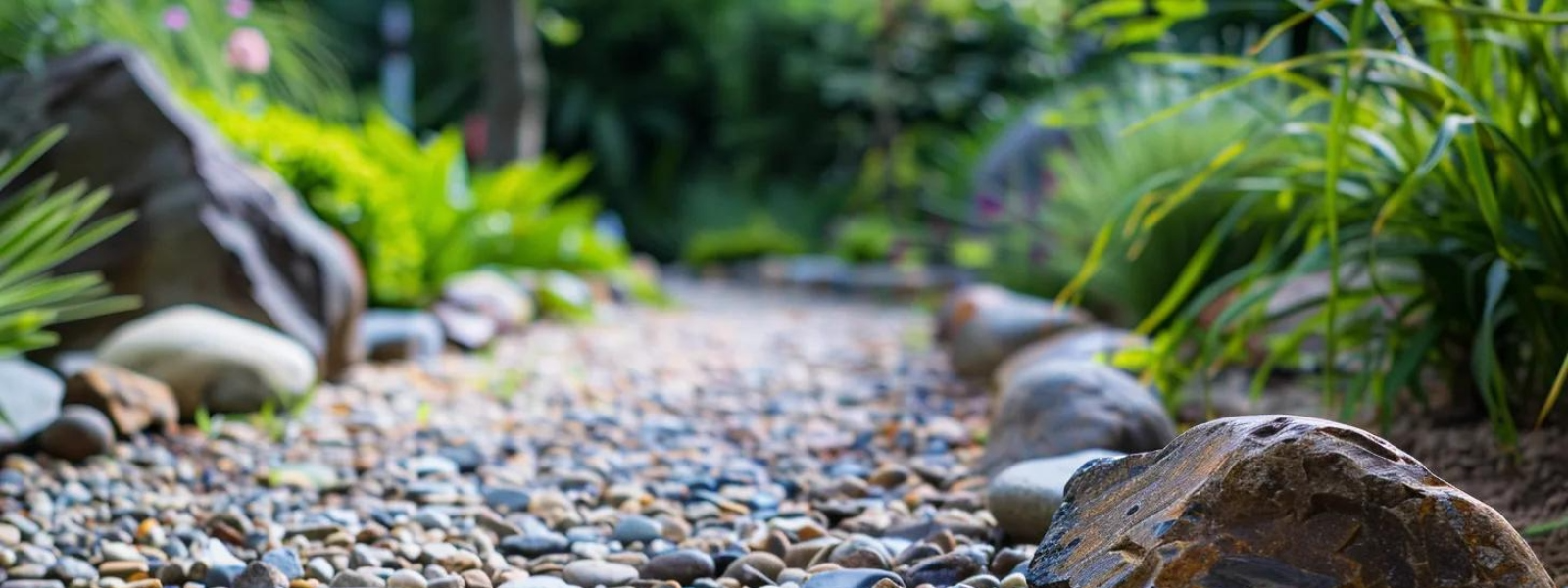
Inadequate slope represents the most common drainage installation error that causes system failure. Drainage requires minimum ¼ inch drop per foot to achieve gravity flow toward outlets.
Installation Errors
Incorrect gravel sizing reduces drainage effectiveness and may cause premature system failure. Using gravel that's too small leads to clogging and poor drainage performance. Pea stone under 3/8 inch diameter should not be used for functional drainage systems.
Fabric installation errors allow soil contamination of gravel systems and reduce long-term effectiveness. Fabric should extend up trench sides and overlap seams adequately to prevent soil migration.
Planning And Maintenance Issues
Outlet planning often receives inadequate attention during drainage system design. Drainage water must discharge to appropriate locations that don't create problems for neighboring properties.
Maintenance neglect allows small problems to develop into expensive system failures over time. Regular inspection and cleaning prevent organic accumulation that clogs gravel systems.
How Does Proper Drainage Benefit The Environment?
Water quality protection represents a major environmental benefit of properly designed drainage systems. Gravel filtration removes sediment, debris, and some pollutants before water reaches streams and groundwater supplies.
Erosion And Flood Control
Erosion prevention protects valuable topsoil from being washed away during rainfall events. Professional systems that address yard erosion problems protect both individual properties and downstream areas from soil loss.
Flood reduction occurs when drainage systems capture and control storm water runoff before it reaches capacity-limited storm sewers. Distributed drainage installations reduce peak flows and prevent downstream flooding.
How Do You Fix Common Drainage Problems?
Standing water problems indicate inadequate system capacity, poor slopes, or drainage restrictions that prevent normal water flow. Properties experiencing persistent standing water issues often need comprehensive system evaluation to identify underlying problems.
System Capacity Issues
System capacity evaluation requires calculating drainage area and comparing to installed system capacity. Undersized systems cannot handle design storm events and may need expansion or replacement.
Gravel displacement during storms indicates inadequate material selection or installation problems. Angular crushed stone provides better stability than rounded gravel in high-flow applications.
Clogging And Contamination
Clogging problems develop when fine materials accumulate in gravel systems and restrict water flow. High-pressure flushing removes light accumulations while severe clogging may require gravel removal and cleaning.
Root infiltration from nearby vegetation can displace gravel and create flow restrictions in drainage systems. Root barriers installed during construction prevent future problems.
Frequently Asked Questions
What Size Gravel Is Best For French Drains?
#57 crushed stone measuring ½ to 1 inch works best for French drains. This size provides optimal water flow while preventing pipe clogging and maintaining structural stability around drainage pipes.
How Deep Should Drainage Gravel Be?
Most drainage systems need 4-6 inches of gravel depth for proper function. Foundation drainage requires 6-12 inches while surface drainage can work with 3-4 inches depending on soil conditions.
Can You Use Pea Gravel For Drainage?
Pea gravel works for light drainage applications around homes and gardens. However, #57 crushed stone performs better for heavy-duty drainage because angular shapes resist displacement during high water flow events.
How Much Gravel Do I Need For A French Drain?
Calculate cubic yards by multiplying trench length × width × depth in feet, then divide by 27. A typical 100-foot French drain needs 3-4 cubic yards of #57 crushed stone including pipe bedding and coverage.
Does Drainage Gravel Need Fabric Underneath?
Geotextile fabric prevents soil migration into gravel systems and extends system life significantly. Install fabric on trench sides and bottom but never cover drainage pipes as this blocks water entry.
Final Thoughts
#57 crushed stone provides optimal drainage performance for most residential and commercial applications. This angular gravel offers the best combination of water flow capacity, structural stability, and cost effectiveness available in the aggregate market.
Proper drainage system design considers multiple factors including soil conditions, rainfall patterns, site topography, and intended use requirements. Professional consultation helps avoid expensive mistakes and system failures.
Material selection affects both immediate performance and long-term maintenance requirements of drainage systems. Higher quality materials cost more initially but provide better performance and longer service life.
Professional landscaping installation provides expertise, proper equipment, and warranty protection that justify additional costs. Installation quality determines whether drainage systems achieve design performance and service life expectations.
Maintenance requirements vary with system type, materials used, and site conditions but regular attention preserves effectiveness and extends service life. Preventive maintenance costs significantly less than system replacement or major repairs.
Professional drainage solutions from companies that understand problems we solve address complex issues that exceed typical homeowner capabilities. Whether addressing foundation water problems, landscape drainage issues, or storm water management requirements, proper gravel selection and installation creates effective long-term solutions.
Stay Connected and Inspired
Get the latest landscaping tips, seasonal care guides, and exclusive offers delivered straight to your inbox. Don’t miss out on expert advice and ideas to transform your outdoor spaces.
Sign Up for Our Newsletter Today!


Your Next Idea Awaits
Stay inspired with our latest landscaping tips and trends.
.webp)
.webp)

.webp)
.webp)
.webp)
.webp)
.webp)

.webp)



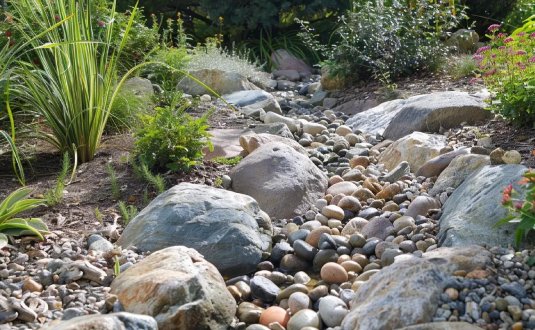

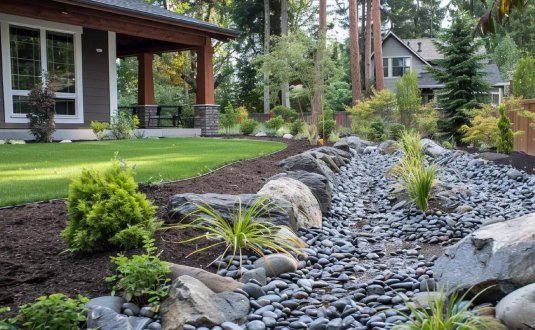
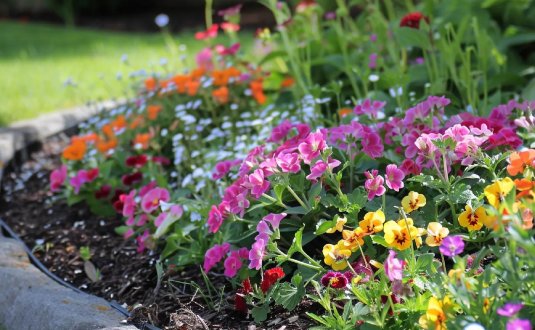

.webp)
.webp)





